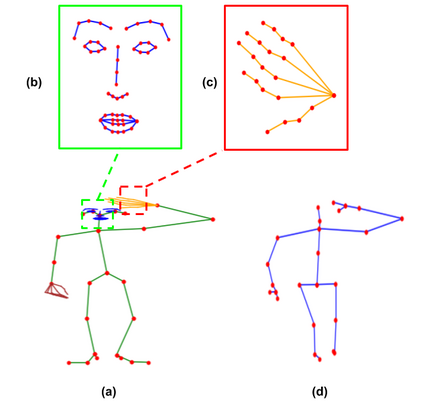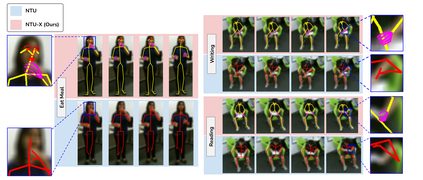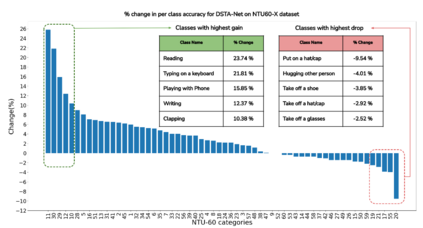The lack of fine-grained joints (facial joints, hand fingers) is a fundamental performance bottleneck for state of the art skeleton action recognition models. Despite this bottleneck, community's efforts seem to be invested only in coming up with novel architectures. To specifically address this bottleneck, we introduce two new pose based human action datasets - NTU60-X and NTU120-X. Our datasets extend the largest existing action recognition dataset, NTU-RGBD. In addition to the 25 body joints for each skeleton as in NTU-RGBD, NTU60-X and NTU120-X dataset includes finger and facial joints, enabling a richer skeleton representation. We appropriately modify the state of the art approaches to enable training using the introduced datasets. Our results demonstrate the effectiveness of these NTU-X datasets in overcoming the aforementioned bottleneck and improve state of the art performance, overall and on previously worst performing action categories.
翻译:缺乏精细的关节(毛结、手手指)是状态最先进的骨骼行动识别模型的一个基本性能瓶颈。 尽管存在这种瓶颈,社区的努力似乎只投入到新结构中。为了具体解决这一瓶颈问题,我们引入了两个基于人类行动新构成的数据集:NTU60-X和NTU120-X。 我们的数据集扩展了现有最大的行动识别数据集NTU-RGBD。 除了NTU-RGBD、NTU60-X和NTU120-X中每个骨骼的25个机构连接外,还包括手指和面部连接,使得骨骼代表更加富有。我们适当修改艺术状态的方法,以便能够利用引入的数据集进行培训。我们的结果表明NTU-X数据集在克服上述瓶颈和改善总体和以往表现最差的行动类别方面的效力。









